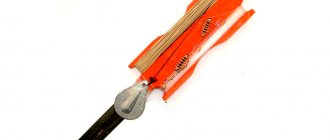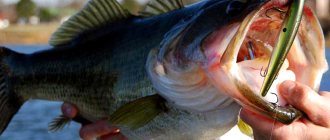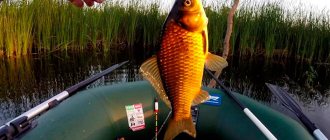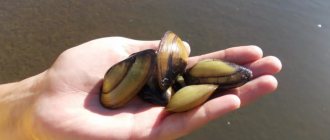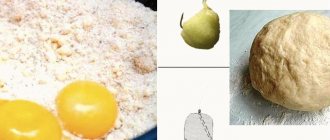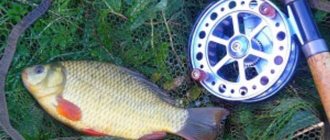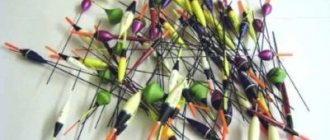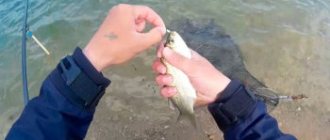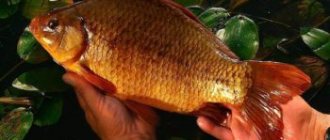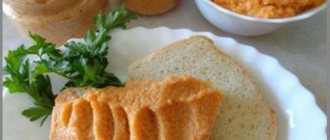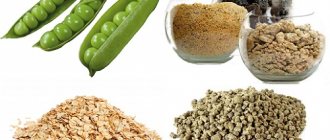Bait is one of the most important nuances that plays a role when fishing. Considering that most men fish for crucian carp, which can be found in many reservoirs, you can focus on it. The reason for this is also that the presented species of fish gives preference to various delicacies, which may include both maggots and porridge.
Although mastyrka for crucian carp is in great demand. We are talking about a dough-like bait, which includes semolina and peas. True, in addition to this, it is allowed to add flavors or natural dyes to make the delicacy look as attractive as possible. But this is not necessary, because if the bait is prepared according to the recipe, then the river inhabitant will definitely like its smell and taste.
How to prepare mastyrka
There are fishermen who believe that the presented delicacy is prepared quite simply, and do not pay enough attention to it. The result is an incomprehensible mixture that can only be thrown away. Despite the fact that bait can actually be made quickly, you should know the exact recipe and do everything step by step.
Before moving on to the basics, it should be noted that there are several different types of mastyrka, although pea is in great demand. At the same time, it can be used in several cases:
- Like bait. It's quite simple to prepare. It is almost impossible to spoil such a delicacy, so experienced ones advise beginners to pay special attention to this bait.
- For the spring. In this case, you should follow the rule regarding the amount of water. There should be enough liquid so that it only slightly covers the cereal during cooking. There is no need to boil the peas too much, because the bait for the spring must be dense, otherwise it will not work. You don’t even have to take the overcooked porridge with you, because you won’t be able to do anything with the puree.
- As a nozzle. Such mastyrka can even be cooked from pea flour, but the porridge should not be boiled so that the bait can be easily placed on a hook.
[custom_ads_shortcode1]
What do crucian carp bite on?
Various baits can be used to catch crucian carp, and in particular:
- mastyrka;
- dung and earthworm;
- maggot;
- corn;
- peas;
- pearl barley;
- bloodworm.
In some reservoirs, crucian carp are successfully caught even with foam balls, but in this case the correct choice of bait plays a big role. And despite the fact that the main attracting factor to the fishing spot is bait, when fishing for crucian carp the bait plays an equally important role.
The peculiarities of the mouthparts of this fish force it to suck up the bait, and therefore the mastyr is the most effective of them. It is recommended to use the mask at any time of the year and on any body of water, since this attachment is truly universal. Even in winter, when crucian carp very actively “respond” to animal baits, since they are rich in protein, properly prepared mastyrka also shows excellent results, and you will always have a catch.
Main Ingredients
The main ingredient in mastyrka is peas. The final result will depend on its quality. Therefore, the fisherman must take into account the following points:
- Sometimes young peas are taken for fishing. Considering that it is very tender, it should be ground a little and then boiled.
- Having bought ordinary dried peas, you will first need to soak them in water and leave them in this state for several hours, and only then start cooking.
- Canned peas are a slightly different story. The smell of canned food will not go away without scalding with boiling water, so do not forget about this point.
- If you happen to find old peas in the cupboard at home, you can also use them. However, given that it is quite hard, you will first need to soak it in water for two days and only after that you can start cooking. Some fishermen grind peas before cooking. This is also allowed.
- Considering that mastyrka without semolina is not mastyrka, you definitely won’t be able to do without this element.
Important! The quality of the finished bait directly depends on the quality of semolina and peas. On the Internet you can see a recipe that contains eggs.
This ingredient can also be added, especially in winter, when there is little food for fish in the rivers. In addition, egg yolks will give the bait a beautiful yellowish tint.
Some fishermen, in the absence of semolina, use ordinary flour. In this case, it is better to add vanillin, anise, honey or sunflower cake to the treat to add a little flavor, because flour does not have a very pleasant smell. However, there is no need to overdo it, because the harshness of odors is no less bad than their lack.
[custom_ads_shortcode2]
Preparation and recipes for mastyrka for crucian carp
Mastyrka is a fish bait made from natural ingredients. The most common ingredients are: semolina, flour, peas, honey, sugar, all kinds of food coloring, vegetable oil. This type of bait is suitable for catching fish such as carp, bream, roach, crucian carp.
To fish with mastyrka, you must use rods with floats. These types are used in the warm season. As practice has shown, every experienced fisherman has at least one original recipe for making mastyrka. It is enough to take different quantities of components, and you will get several options for different complementary foods.
The recipe database contains several basic options for preparing mastyrka, which are based on the use of peas, halva, corn sticks and potatoes. Pea mastyrka remains one of the easiest to prepare . If you go to catch carp, then you need to prepare a potato or corn bait. If you are interested in fish with a sweet tooth, then you can serve them mastyrka made from halva, jam, sunflower oil and peanuts.
Experienced fishermen divide mastyrka into several types, depending on the type of fishing:
- for complementary feeding . The main ingredient of this type is peas. The recipe itself is simple, even an inexperienced fisherman can do it. Errors and small flaws are not scary here. The fish will happily swallow the food;
- for a spring . This option requires practice and experience. Here it is very important to prepare the mastyrka of such a consistency that it is strong, can withstand the action of water, and can remain in it for more than an hour. It is very important for this recipe to monitor the readiness of the peas. It should not be overcooked, because if the peas begin to crumble, you will not be able to form a strong bridge;
- for bait . This type is used as a hook bait. It's easy and quick to prepare. It is enough to take pea flour, boil it in water until it becomes mushy and form complementary foods.
There are mainly four colors used for cooking: green, yellow, red and pink. Yellow became the most frequently used; many fishermen noticed that the catch was much better with it. But it is worth noting that the color of the mastyrka for fishing should be chosen depending on the type of fish and the type of reservoir . For example, large fish that live in green thickets will respond better to green bait. It is the green color that will not make the fish worry, and it will lose its vigilance. These are the features of fishing.
But in lakes where there are small thickets, water lilies are possible, it is better to use pinkish-colored mastyrka. Typically, fish living in such conditions actively react to this color. If fishing takes place at the bottom of a deep reservoir, then red bait will be the best option. The fish clearly spills it and reacts, turning fishing into a gambling activity.
The main ingredient in preparing mastyrka is peas. fishing bait directly depend on the cooking methods If you use young peas for cooking, then they do not need any preliminary operations; the only thing you can do is grind them in a meat grinder so that they cook faster.
If the peas have been lying on the store shelves for a long time, then they must first be soaked for a day so that they soften. Plan this before you go fishing. If you choose canned peas, then you need to pour boiling water over them before cooking so that all the taste qualities that they acquired during canning disappear.
If you store dried peas, then they need to be soaked for at least two days, and after swelling, pass them through a meat grinder. Some fishermen grind it into flour in coffee grinders. Pea flour is also available in the markets. Fishing is the place where everything comes in handy.
To prepare pea mastyrka for fish, you need to add another important ingredient - semolina. Water is used for mixing. As practice shows, the quality of the final product will depend on the quality of the semolina and the freshness of the water. Some recipes contain eggs , which increases the calorie content of the bait. This mastyrka is prepared in winter, since the amount of food for the fish is minimal, so it primarily reacts to nutritious food. It is also important to use an egg if the mastyrka is needed in yellow color. It is the yolk that will help give it this shade.
Some recipes contain wheat flour. It is added for additional viscosity of the finished mixture. It can be used as a semolina substitute. To ensure that your mastyrka has a pleasant aroma for fish, cake, honey, vanilla sugar, and anise oil are added to it. According to the advice of experienced fishermen, you should not overuse aromatic additives ; sometimes they simply scare away their fish with a sharp and rich smell.
You need to start preparing mastyrki by boiling several glasses of water. A glass of pea flour is added to this pan, and the mass must be constantly stirred until smooth. This is also important to avoid burning the porridge. Then, the porridge is placed on low heat and begins to knead thoroughly. You should feel the aroma of cooked peas. Now proceed to pouring the semolina.
It must absorb all the remaining water, and the composition in the pan begins to burn. Do not immediately remove the pan from the heat; you must stir the mixture until the smell of slightly burnt peas appears . After this, the porridge is removed and cooled until completely cooled. Place egg yolks into the cold mass and mix everything thoroughly. Then, you should add one pack of vanilla sugar and mix everything.
Small portions of semolina are gradually added to the cooled porridge. The resulting mastyrka should have such a consistency that you can roll balls out of it. This mass must be kneaded well and rolled out like dough , gradually adding semolina. Your finished mixture should resemble plasticine. As soon as the mass acquires the required stickiness, you can proceed to downloading small balls and enveloping them in flour.
The second cooking method involves:
- using soaked peas – 200 grams;
- sugar and honey.
The peas are pre-washed and soaked in clean water for several hours. When the peas swell, you need to monitor the water level in the bowl; it should cover it by at least 2 fingers. Place the peas along with water on the fire and cook until completely cooked. During the entire process, the contents must be thoroughly stirred. Once the peas are easily crushed with your fingers, you need to open the lid of the pan and let all the water evaporate.
Add vanilla sugar and honey to the boiled peas, a teaspoon at a time , and mix thoroughly again. The selected dye is immediately added. The finished mastyrka should boil like a “locomotive”. Flour and semolina are added to this mixture in a ratio of 1:2. As soon as the mass has cooled, you can take a little vegetable oil, moisten a spoon in it, and crush the mixture. The finished mass is laid out on the table, and balls are rolled out of it.
Carp is a fish distinguished by its exquisite taste, and the bait for it must be prepared with high quality and correctly . Professional fishermen advise using the following products: potatoes, millet, rolled oats, corn grits, macadamia, processed cheese.
Carp loves potato mastyrka. To do this, you need to boil the potatoes in their jackets. Boiled potatoes are peeled and pounded until smooth. The finished puree is mixed with boiled peas in a ratio of 6:4. Next, semolina and flour are added. Garlic and strawberries can be used as aromatic additions. It is good to use sunflower oil as a flavoring.
Methods for preparing mastyrka
It may be a little difficult at the beginning until the fisherman gets the hang of it. It must be said that it is important to pay attention not only to the recipe, but also to the resulting texture. The finished “dish” should be dough-like and not stick to your hands, and to achieve this result you will have to put in some effort.
There is a classic pea mastyrka, which is prepared as follows:
- Take two glasses of peas, soak them for 10-12 hours, and then drain the water, pour in new water so that it is two fingers above the level of the cereal, and cook the peas. It is necessary to ensure that the porridge does not boil over, but is cooked and does not yet stick to the bottom.
- When the main ingredient is cooked, add 2-3 cups of semolina (you can also use flour) and begin to knead it all until the mixture stops sticking to your fingers. If the porridge does not smell very good, then it would not be a bad idea to pour one spoon of vegetable oil into it. The ideal option would be sunflower, as it has an attractive aroma of seeds. The finished mastyrka is dense, it rolls easily into a ball and smells pleasant.
When the process is completed, you can begin rolling small dense balls, which will then need to be wrapped in a damp but clean cloth (cotton will do) and then hidden in cling film. After this, all the preparations are put into a large bag and sent to the freezer, where they can be stored for as long as possible. Immediately before fishing, the balls are defrosted so that they can be used.
[custom_ads_shortcode3]
Potato recipe
This bait is used mainly in the warm season. Preparing mastyrka for crucian carp from potatoes does not take much time. The main thing in the process is to stick to the recipe. Potatoes (about six boiled in their jackets), a loaf of bread, preferably rye, corn grits, sunflower or corn oil - that’s what this crucian carp mastyrka consists of. Preparation according to this recipe is carried out as follows: first, the main ingredients are twisted in a meat grinder. Then porridge is prepared from a glass of corn grits. After this, all components are mixed and again twisted through a meat grinder. The resulting mass must be thoroughly crushed until it stops sticking to your hands. Add one tablespoon of vegetable oil and mix well again. This is how potato mastyrka is prepared for crucian carp. This recipe is the easiest to prepare.
Mastyrka “Assorted”
Mastyrka of this type is prepared somewhat differently than the previous one. The recipe for its preparation is as follows:
- The peas are soaked and cooked according to the same principle as in the classic version. Only in this case, the semolina used is taken in the amount of half a glass and not just added to the mixture, but also boiled beforehand. In addition, in addition to semolina, they also take pearl barley and millet, in the same quantities, and also boil until tender.
- After this stage is completed, you need to mix all the porridges together and grind them through a sieve. The resulting mass should be homogeneous, which should be mixed again.
- In the case of liquid bait, flour or semolina is added to it. True, you should not use a lot of this ingredient, because it can clog the main taste.
The finished mixture is rolled into small balls. At the same time, a plastic bag is greased with vegetable oil and a treat is sent into it.
If a fisherman is going to go fishing with such bait in the warm season, then he needs to store it in the shade so that it does not get wet. If this happens, then flour is added to the bait. Of course, you will then have to take such an ingredient with you so that it is always at hand.
A good mastyrka easily stays on the hook without getting wet or falling.
[custom_ads_shortcode1]
Useful tips for fishermen
Simple tips will help ensure that the mastyrka bait is prepared correctly and tasty.
Important! Dry peas, regardless of the recipe, must be soaked. Important Recommendations:
- It is best to cook peas in a pan with an anti-oxidation coating.
- The main emphasis is on peas, and not on semolina, so there cannot be as much of it as the main ingredient, much less more.
- The smell is the most important thing. If the bait smells bad, then not a single fish will swim to it, let alone bite.
- If the mastyrka turns out to be thick, there is nothing particularly terrible about it. Before use, it is allowed to soak it a little so that it has the proper appearance.
- If you want to use dyes, but in the absence of them, you are allowed to use vitamins; the same Gequasite, for example, will do.
Fishing is not just entertainment; sometimes it is quite a complex task that requires general composure and a certain attitude. Using special baits for catching crucian carp, if a fisherman goes for this fish, returning with a good catch will not be a problem.
How to prepare mastyrka for catching crucian carp Link to main publication
Mastyrka for crucian carp is a popular bait known to fishermen for a very long time. With its help, not only this underwater inhabitant is caught. Bream, blue bream, silver bream, roach and carp are successfully attracted to it. It belongs to plant baits, therefore it is most relevant in the warm season, when peaceful fish are predisposed to such food items.
There are many ways to make mastyrka. Each fisherman has his own secret for preparing this bait. When it was not so well-known and unpopular, seasoned donors kept the recipes for its preparation secret. And only over time, this unusually effective bait went to the masses.
[custom_ads_shortcode2]
What is mastyrka and when is it best to use it when fishing for crucian carp?
This type of bait and bait is used by many anglers. When fishing for crucian carp, the best option is bait and pea bait. When placing such a bait on a hook, the angler is confident that it will remain secure on the hook and that the number of bites will increase.
Important! When fishing for crucian carp, mastyrka will help increase the catch in the warm season, when the fish prefer eating vegetable baits and baits. The cold season is the best time to use animal bait.
What kind of miracle remedy is this that can attract not only crucian carp, but also almost all white fish? This is a simple herbal bait that does not require the use of expensive ingredients.
And you can make it in any kitchen and even on the go. Industrial bait is also sold, but, as experience shows, the best remedy is a homemade substance with the addition of various ingredients. Some fishermen pass down secret recipes from generation to generation.
But the main components of any mask are the same:
- Split peas: Many fishermen grind peas into flour, speeding up the preparation of the all-purpose remedy. If it is not possible to get pea flour, you can soak old peas for several days and then boil them.
- Semolina: This product is important to use for catching any white fish. Crucian carp and roach especially love it.
- To increase calorie content, some fishermen advise adding an egg.
- Plain water without gas: if you are fishing, you can use water from a reservoir.
- To add viscosity, flour is added to the bait.
- Carp and crucian carp love the taste of honey, so it is also used in cooking.
- It is recommended to add a little red dye to the bait - this will give it additional catchability.
- Mushroom or other scraps purchased from a creamery.
- It is recommended to add flavorings, but you should not get carried away with them.
Important! Some fishermen believe that there can never be too many flavorings, but this misconception is easily refuted during fishing, when an amateur is left without a catch when crucian carp activity is high. Excessive use of flavorings will repel fish rather than attract them.
All substances for mastyrka will work and attract crucian carp only when the angler knows the answer to the question of how to prepare mastyrka for catching crucian carp.
How to properly prepare pea mastyrka (recipes)
After preparing all the ingredients, the angler should prepare a clean aluminum pan and masher for making pea puree.
There are many recipes for making it, but pea mastyrka for crucian carp and crucian carp is prepared in the same way at the initial stage.
More clearly, you should go to YouTube and type in the search window, “how to prepare mastyrka for catching crucian carp, video.”
The number of videos will please any novice fisherman. The whole process is divided into several stages:
- Sort out the peas: for one serving: it is better to prepare 200 g of cereal. Spoiled or unripe peas should not be allowed to enter the total mass of peas.
- Selected grains are thoroughly washed and soaked for 2–3 hours. The peas will be ready to continue cooking when they have all settled to the bottom.
- The water in the pan should remain 10–15 mm above the cereal layer; now the pan is placed on the stove. Bring to a boil, turn down the flame, cover with a lid and leave to simmer over low heat.
- When the peas become soft, open the lid. In this case, the water will boil away faster.
- Grind the finished mass and crush it with a masher until a homogeneous mass is formed.
- To increase the viscosity, add flour and knead until the porridge does not stick to your hands.
- At the same time, honey, sugar and selected flavorings are added.
- The finished mass is divided into several balls.
That's it, the pea mastyrka for crucian carp is ready. The balls are placed in an enamel bowl and gradually cool down. At the same time, do not let the balls lie in water or condensation on the walls of the dish. Therefore, after a while they should be turned over and the water drained. It is better to place a cloth under the mask, but it must be constantly twisted.
Many fishermen advise adding vegetable oil to mastyrka; it is very loved by peaceful fish; many add anise oil. There are many options, as well as recipes for adding flavors. But the basic rule “do no harm” is followed by all experienced amateurs.
To make a good mastyrka with your own hands, videos on the Internet advise using pea flour or cereal ground in a coffee grinder . In this case, the bait is prepared in the following way:
- pour the same amount of pea flour and semolina into an aluminum pan;
- the mixture is kneaded until smooth;
- Water should be poured in an equal amount to the volume of the mixture.
There is another recipe for making mastyrka for crucian carp. For this you will need a loaf of rye bread, several boiled potatoes, and flour. Many people prefer to use cornmeal for this bait.
All ingredients are mixed until smooth, sunflower oil is added, kneaded again, then knead the mass with the addition of flavorings. This is a very quick way to make a simple mastyrka, but pea mastyrka is considered by many fishermen to be the best. Next, the bait is prepared using the technology already given.
Important! When dividing the finished bait into balls, you should do this taking into account the required size for fishing. They should not be made large. If you take bait fishing several times and do not use it completely, you risk not seeing a single bite. It is better to immediately make small balls and take several pieces for bait and lure.
We figured out how to make mastyrka for crucian carp, but now it’s important to find out how to preserve it at home and on the river .
Storing mastyrka at home and while fishing
To prevent the loss of the attractive properties of mastyrka, it must be properly preserved so that it does not lose its attractiveness for crucian carp. There are several ways to store balls. You can place each part of the bait in a separate, washed and wrung cotton fabric.
We wrap a piece of material around all sides of the workpiece. We repeat this operation with all the mastyrka balls. Now, to preserve it at home, we put all the wrapped balls in a plastic bag and put them in the freezer. Now, before each fishing trip, we will need to select a sufficient amount of bait and enjoy the activity of crucian carp.
But it is better to use another method of storing mastyrka. To do this, you will need to wrap not all the mastyrka balls in a bag, but place each of the canvas balls in a separate bag. At the same time, you should not allow air into the unused bait - in this case, it becomes crusty and disappears.
Many beginners are unable to put a mastyrka on a hook - it constantly falls off, and fishing turns into flour. To prevent such inconvenience, you need to know the answer to the following question.
Where and how to apply?
Mastyrka is a universal nozzle. It shows excellent results in various currents, consistently attracting bream and other white fish. There is probably no river where it would be impossible to catch peaceful underwater representatives with this bait. It is used in the following fishing methods:
- feeder;
- picker;
- fly rod;
- match;
- donka;
- rubber.
In closed reservoirs, where crucian carp and crucian carp are predominantly found, mastyrka also brings good catches. These fish like this kind of bait, so often fishermen give it preference over various newfangled boilies and other baits.
[custom_ads_shortcode3]
Preparing mastyrka
What is mastyrka? This is a simple pea dough to which semolina porridge and other additional ingredients are added. Its main ingredients are:
- peas;
Photo 1. Peas are the main component of mastyrka. - semolina.
None There are several ways to cook peas:
- Cooking. The peas are poured into a pan, filled with water and cooked until they turn into porridge and all the water has boiled away.
- Soak. The peas are poured with warm water and infused for 12 hours, after which they can be ground.
Important!
Peas take a long time to cook. To speed up the process, experienced fishermen add a pinch of soda to the pan.
- Combined method. First, the peas are soaked and then put on fire. This way you can reduce the cooking time of the mastyrka by first allowing it to swell and absorb a sufficient amount of water.
- Water bath. In this case, pea flour is taken and mixed with wheat and semolina. Add water and mix until a viscous consistency is formed. Place the resulting mixture in a bag, squeeze out the air, tie it and cook until the mastyrka becomes thick.
Below we will talk about how to prepare mastyrka directly.
[custom_ads_shortcode1]
Mastyrka recipe
Making a mask is not difficult, but it takes some time. In order to prepare this effective bait, the fisherman will need the following equipment:
- a saucepan of a suitable size;
- gas stove;
- masher or spoon.
If all the listed elements are available, then we can safely proceed to making the mask. We take the following ingredients:
- a glass of peas;
- half a glass of semolina;
- sugar;
- soda;
- flavoring (if necessary).
So, pea mastyrka is made as follows:
- Soak the peas 4-6 hours before cooking.
Photo 2. Soak the washed peas. - Pour a glass of peas into the pan, which we thoroughly wash and sort beforehand.
- Fill with water a couple of centimeters higher than the level of the peas.
- Place the pan on the stove and when the water boils, reduce the heat to low.
Photo 3. Peas during the cooking process. - After an hour, you need to start stirring and crushing the peas. In this case, the lid of the pan should not be closed.
- Gradually, the water will begin to boil away, holes will appear in the resulting mass, through which air will begin to escape over time. At this very moment it is necessary to pour the semolina into the pan.
Important!
Semolina should be poured in slowly, stirring the peas at this time.
After this, do not remove the pan from the stove. Continue stirring the resulting mass until it acquires a viscous consistency. The mixture should not be too liquid or dry.
Having obtained the mass of the desired consistency, remove the pan from the stove. Photo 5. We divide the finished mastyrka into 2 parts: for bait and for bait.
That's it, the bait for carp, crucian carp, bream and other peaceful fish is ready. Now, if desired or necessary, it can be improved. Flavorings are used for this.
They may be different. More often, fishermen use vanilla, honey, grated garlic and others. You should add these components consciously, otherwise you can ruin the nozzle.
Advice!
It is known that crucian carp in some reservoirs prefer mastyrka, to which honey is added. Therefore, beginners often lose out to seasoned fishermen in catches, because they do not know the subtleties and habits of the fish, as well as the secrets of specific bodies of water.
The basis of successful fishing is always quality bait. Today there is a huge variety of devices for effective fishing. Some of them can be purchased in specialized stores, while others are easy to make yourself.
The bait for crucian carp is rightfully considered a successful and productive invention. Since this type of fish is a gourmet fish, the preparation of this delicacy should be approached with the utmost seriousness. The varied diet of the vertebrate allows you to experiment with bait and is guaranteed to attract the attention of crucian carp.
[custom_ads_shortcode2]
Microwave cooking
Reviews about the catchability of this bait are all positive. Not a single crucian fishing trip can take place without it, especially in the warm season. That is why many, when going to a pond, prefer to quickly prepare the mask using a microwave oven. For this recipe you will need pea flour and semolina - half a glass of each. After pouring the cereal into a plate and mixing thoroughly, you need to pour a glass of boiling water over it. The result should be a homogeneous paste, without lumps. After this, the plate is placed in the microwave for two to three minutes. The mastyrka is ready: just wait until it has cooled completely, add flavorings, such as vanilla or chocolate, and then form balls and carefully place them on a cotton cloth.
When and how to use mastyrka for catching crucian carp
Mastyrka is a dough-like bait that consists of peas and semolina. To enhance the aroma, various dyes and flavor enhancers with your favorite fish ingredients are added to complementary foods. During the preparation process, it is important to maintain proportions and make the right bait, otherwise it may not attract, but rather scare away the predator.
The best time to catch crucian carp is in the spring, namely in May. Since this type of fish is considered very capricious and finicky, it is recommended to stock up on bait of animal origin (just in case).
In the cold season, crucian carp prefer bait such as red dung worm or maggot, so the use of dough-like bait is not advisable.
It is best to use prepared bait for crucian carp, bream and carp. All you need to do is place the bait on rods, donkeys or donkeys with a spring. To enhance the effect, it is recommended to use flavorings. It would be appropriate to use mastyrka on crucian carp in the spring.
Mastyrka for crucian carp is a successful bait, known to fishermen for a very long time.
[custom_ads_shortcode3]
Mastyrka recipe
The easiest way is to prepare the bait yourself. Before making mastyrka for crucian carp, you need to prepare all the components. The main ingredient when preparing bait is peas. The quality of the dough-like product is important for fishing.
There are recommendations for proper preparation of the main ingredient:
- when using young peas, you just need to grind the product and start cooking;
- dried peas should be soaked in cold water and left to “swell” overnight;
- pea mastyrka for crucian carp can be prepared from a canned product, for this you need to pour boiling water over the peas;
- old peas are soaked for several days and twisted through a meat grinder.
Which rod to choose for carp fishing?
Cooking pea mastyrka for crucian carp is impossible without adding semolina. Any bait is prepared on the basis of water. Some experts add eggs to the pea dough. Thanks to this component, the color of the bait becomes more yellowish, and the food becomes higher in calories.
There are recipes for mastyrka for crucian carp that contain flour. The classic preparation involves using the following ingredients:
- peas;
- sunflower oil;
- semolina;
- dyes/flavors;
- sugar.
You can also add honey and other ingredients to the bait. Let's take a closer look at how to cook mastyrka for crucian carp.
There are many ways to prepare mastyrka.
[custom_ads_shortcode1]
How to use mastyrka for fishing
For fishing with pea mastyr, rods with float tackle are most often used; donkeys are also effective with this attachment. The feeder fishing method is not so good, but even with it, fishermen use this bait. If pea crumpet is used as bait, then it will have to be cooked coarser, in which large granules will predominate. For bait, a more plastic paste is prepared, which can provide the most reliable attachment to the hook and an optimally long grip on it.
When using pea bait, the most popular types of tackle are match, Bolognese and fly types. For such fishing, several types of bait are made, each for a specific tackle. The balls prepared for feeding are evenly divided and thrown in a heap at the point of future fishing. To improve the results of luring fish, a mixture based on millet and semolina is placed in the spring, and the pea crumb itself is placed on the hook. A pre-prepared approach to fishing ensures an active bite and, as a result, a good catch.
Despite the emergence of new types of fairly effective baits, pea mastyrka does not lose its high demand among fishermen; they have caught crucian carp with it, and will continue to catch it for a long time. Fish, attracted by the pea aroma and sweet smells of additional flavorings, will not remain indifferent, which guarantees a wonderful catch, a great weekend and high spirits.
Making mastyrka at home
Every fisherman should know how to prepare mastyrka for crucian carp fishing. First you need to prepare all the required elements: a saucepan, a coffee grinder, a masher, food bags. Next, you should carefully sort out the peas, prepare them and grind them to flour using a coffee grinder.
Do-it-yourself mastyrka for crucian carp is quite simple: 200 g of peas are soaked for about 10-12 hours, after which they are cooked until tender. The water should be a couple of centimeters higher than the peas. After the peas become soft and the water has completely evaporated, they must be ground into a puree.
You can add a little sugar, honey, dyes and flavors (vegetable oil if desired) to the resulting product. At the final stage, semolina or flour is added.
The bait must cool completely and then it is ready for further processing. Small balls are made from it.
[custom_ads_shortcode2]
"From Mikhalych"
There are many options for preparing this surprisingly simple, but very catchy bait. Moreover, most often the composition necessarily contains peas or flour made from them. The most popular mastyrka for crucian carp today is “From Mikhalych”. Many white fish lovers liked the preparation of this pea dough according to an individual recipe. Mastyrka "Ot Mikhalych" is used as bait for both river and lake fish - bream, carp, roach, as well as silver bream and others. It is considered the best bait for those bottom tackles that use a spring.
In addition to peas, the recipe must contain semolina. If desired, you can add honey, sugar and sunflower oil. Some people add food coloring and flavorings to their homemade mastyrka. Thanks to the use of such components, the smell of the bait becomes stronger and better attracts prey. And this, in turn, leads to a rich catch.
Preparation of groundbait from mastyrka
Each fisherman will be able to independently prepare mastyrka for crucian carp as bait. To do this you will need peas and the following additional ingredients:
- semolina and millet cereals;
- pearl barley;
- other grains as desired.
The cooking recipe is almost identical to the previous one. The only difference is that all other cereals are added before the semolina. You can use dill, vanilla, honey, grated garlic or onion, sugar and salt as flavorings. When wondering how to prepare mastyrka for crucian carp, you should note that this bait is best accepted by fish in the warm season.
Each fisherman has his own special secret for preparing this bait.
[custom_ads_shortcode3]
Mastyrka from millet and pearl barley
Another recipe for making mastyrka involves using it not only as a bait, but also as bait in a spring or nipple. To prepare this mastyrka you need to take:
- 400 grams of peas;
- 100 grams of millet;
- 100 grams of pearl barley;
- 100 grams of semolina;
- 50 grams of flavoring;
- 50 grams of dye (optional).
First you need to mix millet with pearl barley and semolina and cook this mass until completely cooked (it should be soft and practically free of grains). Next, cook the peas until they become soft. Boiled cereals, flavoring and coloring are added to the peas, and the whole mass is ground through a coarse sieve (4-6 mm).
The dough is kneaded until it becomes soft clay, divided into three parts, wrapped in a wet cloth and placed in the refrigerator. If during kneading it is not possible to achieve a dense mass, it is necessary to add a little wheat or corn flour until the desired result is achieved.
Important! Any mastyrka for crucian carp should be dense, because if necessary, it can be softened by adding water. But it is unlikely that it will be possible to make liquid bait dense in a reservoir, so you need to strictly adhere to the manufacturing recommendations and the ratio of components.
Recommended reading: Fish first courses
Semolina is the connecting link, and the semolina itself should have the aroma of peas, honey, or a specially added flavoring. In the spring months, mastyrka with vanilla or anise drops is especially effective, but in the summer honey, garlic and thyme work great.
How to properly store mastyrka
The prepared dough-like bait is stored in the refrigerator for a long time. However, it is believed that the older the bait, the less flavorful and attractive it is to fish. It is allowed to store bait in the freezer.
If you don’t want to freeze the bait, then you can use the following method: roll out the bait like a pancake, dry it thoroughly in the sun or in the oven, and then grind it in a coffee grinder. As a result, the fisherman will receive pea flour, which can be stored in a glass jar and taken fishing at any time. Near the water, the bait is diluted to the required state and is ready for use.
What is Salapin porridge for fishing and how to prepare it?
[custom_ads_shortcode1]
Tips for fishing with mastyrka
Properly prepared bait is the key to successful fishing. Since the main ingredient is peas, you should be careful when preparing the product. It is recommended to cook in pans that have an anti-oxidation coating.
Semolina is a binding element, so its quantity should be minimal. The fish should smell peas, and if it is absent, this indicates a violation of the bait preparation algorithm. It is important to understand that thick bait is better than thin bait.
The fisherman can always bring the dough to the desired consistency on his own. If there is no dye available, you can always add an egg or vitamins.
To achieve maximum effect, it is recommended to pre-soak the peas (time depends on the maturity of the legumes). The bait can be used for several months if stored properly. Catching crucian carp with a mastyrka will be successful and will not leave the fisherman indifferent.
Originally posted 2018-08-02 17:03:42.
The most effective man-made bait for catching carp, crucian carp, and bream is the mastyrka. The classic mastyrka recipe includes peas and semolina. Its secret is not in the ingredients, they are known to almost everyone, but in the cooking process.
Here it is important to add semolina on time and correctly, and also to guess its quantity. In the classic version there is nothing but semolina and peas. In the recipe for making pea mastyrka for crucian carp, you can add garlic, the smell of which is so attractive to it, but this must be done on the shore.
[custom_ads_shortcode2]
Preparation
It is better to prepare everything you need in advance. This is necessary so that the preparation of pea mastyrka - for crucian carp, bream, silver bream, etc. - goes quickly, so that the one who will carry out this process would not be distracted in search of the necessary components or related items. Having prepared everything in advance, you can get this incredibly catchy bait in a maximum of an hour. Preparing mastyrka for catching crucian carp according to this recipe requires the presence of a three-liter aluminum pan for cooking peas, a coffee grinder to speed up the process, an enamel bowl in which to mix the components, linen or cotton cloth, food bags and a wooden masher.
Having prepared all the above items, you can start preparing the products needed for this bait. Peas need to be sorted and bad peas thrown away. It is better to take semolina as dry as possible, without lumps. Honey must be fresh and of high quality. They say that this increases the shelf life, and this is quite important for such a natural bait as mastyrka for crucian carp.
Classic pea mastyrka
Ingredients:
- Peas – 1 cup
- Semolina – from 1/3 to 1/2 cup
- Boiling water
To prepare mastyrka, you need to take yellow, peeled peas, preferably of good quality, that is, the kind you would use for soup or porridge for yourself. Even the best mastyrka recipe made from poor raw materials will not bring the expected result.
- Pour water over the peas and leave for several hours to swell. It is better to take an aluminum pan in which the pea butter will be cooked; a three-liter pan will be enough.
- After the peas have swollen, drain the water and rinse the peas. This must be done so that there is less foam during cooking.
- Now you need to add water to the peas and cook the mastyrka. The water should cover two fingers of the peas.
- As soon as the water boils, the foam must be removed. Cooking time – up to 1 hour.
- After an hour, drain the water and continue to cook the peas over very low heat, stirring continuously so as not to burn. This can be done using a masher, while simultaneously kneading the mass. Cooking mastyrka from peas occurs only on low heat!
- When the peas start to “puff”, it’s time to add the semolina. This needs to be done gradually: add a spoon, stir, add again, stir again. And so on until you get a consistency similar to soft dough. At this stage, you no longer need to stir, but knead intensively, and constantly, otherwise it will burn.
- The finished mass should be cooled slightly and passed through a meat grinder.
- All that remains is to knead the pea mash, form it into a ball, pack it in a bag or cling film and you can go fishing.
The more semolina there is, the better the pea mastyrka will stay on the hook, but the catchability of such a bait will decrease. The best option in terms of time is that the mask should be enough for one cast. If the bait stays on the hook longer, it means that you have gone too far with the semolina and next time you should add less of it.
The amount of semolina depends on the quality of the cereal, and it varies from manufacturer to manufacturer, so it is difficult to give exact proportions.
[custom_ads_shortcode3]
Recipe for making pea mastyrka for catching crucian carp
As you know, crucian carp has a sweet tooth, so when preparing the bait we will use honey in addition to the main ingredients. You will need a little of it, just 1 teaspoon per 1 cup of peas. As in the previous recipe, the peas must first be soaked and then cooked.
To make the process go faster, add a quarter teaspoon of regular baking soda to the water. It will soften the water and the peas will boil quickly. When you get porridge, you can start adding semolina.
For flavor, add unrefined sunflower oil. The proportions of mastyrka for crucian carp are as follows:
- Peas – 1 cup
- Semolina – 0.5 cups
- Honey – 1 tsp
- Unrefined sunflower oil – 1 tbsp. l
- Raw egg yolk
While the peas were cooking, some of the liquid evaporated, make sure that there is not too much of it. If necessary, the excess will need to be drained. Semolina is added gradually, mastyrka for crucian carp is kneaded first with a spoon and then with a masher.
When the mixture becomes like dough, it should be allowed to cool slightly, after which you can add the yolk and liquid honey. Knead everything well and put it in a bag. In this recipe, egg yolk is used to give the mastyrka a color that attracts crucian carp.
You can use orange food coloring instead of yolk. You shouldn't add a lot of it. The color should be a natural warm yellow.
[custom_ads_shortcode1]
How to store mastyrka
This attachment can be prepared once and used throughout the season, so the difficulty in preparing it is a one-time phenomenon. So, let's prepare a large portion at once.
- After cooling completely, form small balls from the mastyrka. We do this so that there are no air chambers left inside the ball, that is, we mold it tightly.
- Next, each ball should be wrapped in a piece of clean and slightly damp natural fabric and each should be placed in a separate plastic bag.
- Tie all received bags, release the air, and place them in one bag.
- Place the bag in the freezer, also tying it.
On the eve of fishing, one or two balls should be taken out of the freezer and left to defrost on the refrigerator shelf. Share the article on social media. networks:
Sources:
- iarybak.ru
- fishelovka.ru
- rybalka.guru
- samrybak.ru
